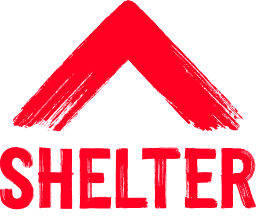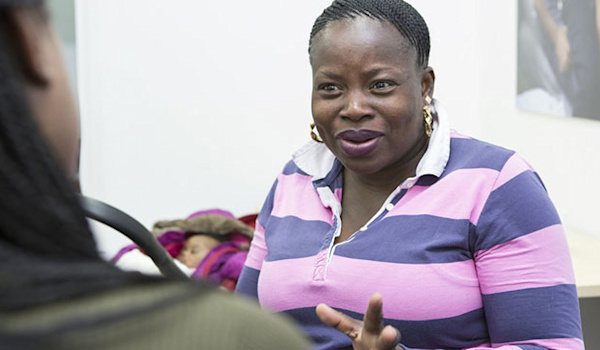Local housing allowance (LHA) if you're under 35
Local housing allowance (LHA) is not a separate benefit.
LHA rates affects how much help with rent you can get when renting from a private landlord.
It is used to work out both:
universal credit
housing benefit
Find out how to deal with a rent increase if you get benefits.
Local housing allowance (LHA) rates
If you're under 35 you might get:
the shared accommodation rate
a 1 bedroom self contained rate
a higher rate based on the number of bedrooms you need
You can work out how much you could get if you already know your LHA rate.
Check the rules on this page if you're not sure what your LHA rate should be.
Shared accommodation rate
You usually get the shared accommodation rate if you're single and under 35.
The shared accommodation rate is lower than other LHA rates.
It should cover the cost of renting a room in a shared house. But it is often not enough.
If you're pregnant
You can usually only get the shared accommodation rate until your baby is born unless you already have children.
Some councils give discretionary housing payments to top up your LHA before your baby is born. This could help if you cannot live in shared housing while you're pregnant.
If your children stay with you
You can usually only get the shared accommodation rate unless your children are part of your benefit claim.
You can get a higher LHA rate if children live with you and are included in your benefit claim.
1 bedroom self contained LHA rate
This is higher than the shared accommodation LHA rate.
You could get the 1 bedroom self contained LHA rate if you:
live with your partner
are a care leaver under 25
have experienced domestic abuse
lived in a hostel or refuge for at least 3 months
get disability benefits but do not need overnight care
are a former prisoner aged 25 to 34 covered by MAPPA
are a survivor of modern slavery
If you can get the 1 bedroom self contained LHA rate, it is used to work out your benefits even if you live in shared housing.
But you cannot get more than your actual rent.
In some areas you could rent a property where you do not have to share.
If you and your partner get universal credit
You get the 1 bedroom self contained rate if you claim as a couple, even if you live in a shared house.
If you and your partner get housing benefit
You get the:
shared accommodation rate if you live in a shared house
1 bedroom self contained rate if you do not share with other people
If you're a care leaver under 25
You can get the 1 bedroom self contained rate until you're 25 if you were in care when you were 16 or 17.
You count as a care leaver if you had a pathway plan from social services when you left care.
Social services can confirm your care history.
If you have experienced domestic abuse
You can get the 1 bedroom self contained rate if you have experienced domestic abuse from a partner, former partner or relative at any time since you were 16.
You need a supporting letter from a professional or your employer that confirms the abuse.
Professionals who can write you a letter include doctors, nurses, health workers, social workers, charity workers and the police.
If you've lived in a hostel or refuge for at least 3 months
You can get the 1 bedroom self contained rate if you've lived in a hostel or refuge for at least 3 months since you were 16.
The 3 months do not have to be recent or all in a row. For example, you could have stayed in different hostels or refuges that add up to at least 3 months in total.
The hostels or refuges must have provided:
meals or shared kitchen facilities
support or resettlement services
If you were given a room in a hotel or B&B because you were homeless during the pandemic, this counts if you had the same type of support as you would get in a hostel.
Keep your agreement if you move out of a hostel or refuge so you can prove it in the future.
You may need to ask the hostel or refuge to confirm your stay if you do not have proof.
If you get disability benefits but do not need overnight care
With universal credit, you can get the 1 bedroom self contained rate if you also get:
PIP – daily living component
DLA – middle or high rate care
armed forces independence payment
With housing benefit, you can get the 1 bedroom self contained rate unless someone else gets benefits because they are your full time carer. Then you get the shared accommodation rate.
If you're a former prisoner covered by MAPPA
You get the 1 bedroom self contained rate if you:
are aged 25 to 34
have to live in certain types of housing under multi agency public protection arrangements (MAPPA) - Level 2 or 3
If you're a survivor of modern slavery
You can get the 1 bedroom self contained rate if the Home Office has given you a positive 'conclusive grounds' decision.
Higher LHA rates
You can get a higher LHA rate if you:
need overnight care
live with children or other household members
Your LHA rate depends on the number of bedrooms you can claim for.
You need overnight care
You can get a higher rate if a carer stays regularly to provide overnight care and you get:
PIP – daily living component
DLA – middle or high rate care
Your carer could be a friend or family member, or part of a team of paid carers who stay overnight. There must be a bedroom for your carer when they stay.
You live with children or other household members
You get a higher LHA rate if you live with:
children under 18 including foster children
adult children or other household members
If you're a foster carer without a placement, you can still get a higher rate if a foster child has stayed in the last year.
If your benefits do not cover the rent
Your LHA rate is the maximum amount you can get to help with rent. It is often lower than the total rent you have to pay.
You may not get the full rate. For example, if you're working.
If you're struggling, you can:
apply for discretionary housing payments from the council
get benefits advice if you think you're on the wrong LHA rate
Last updated: 26 March 2024

